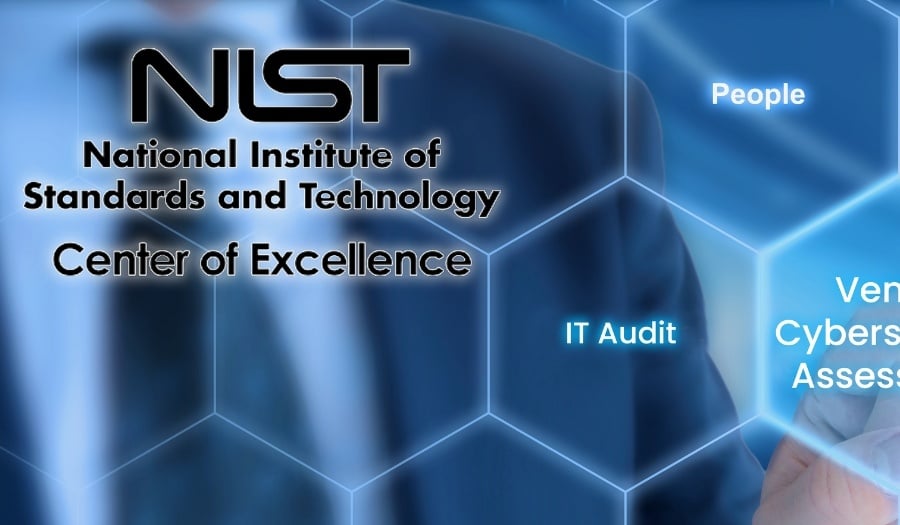How to Conduct a Vendor Security Assessment
Here are the key takeaways from this blog:

Key takeaways from this guide:
Get Early Access to AI-Powered Vendor Security Reviews
Worried your vendors might be putting your data at risk?
Ensuring your partners maintain strong security standards is just as important as protecting your internal systems. That’s where the NIST Vendor Security Framework comes in—it helps you assess and strengthen vendor security, reducing risk and improving compliance.
In this guide, we’ll break down the fundamentals of NIST and explain how partnering with experts like Rivial Security can make the process more efficient and effective.
While NIST does not have a dedicated framework exclusively for vendor security, its publications (e.g., NIST CSF, SP 800-161, SP 800-171, SP 800-53) provide extensive guidance on managing vendor and third-party risks. These resources outline best practices for assessing vendor security controls, identifying potential vulnerabilities, and implementing strategies to mitigate risks. By leveraging this guidance, organizations can develop a tailored vendor security program that aligns with their broader cybersecurity goals and regulatory requirements.
The NIST Framework comprises three essential elements: Functions, Categories, and Subcategories. Let's break down these components to gain a clear understanding:
These represent the high-level categories that define the fundamental areas of cybersecurity management. There are five functions, each serving a critical role:
This function focuses on understanding and managing cybersecurity risks, enabling organizations to know what they need to protect.
Protection involves safeguarding data, assets, and systems from potential threats. It's all about putting security measures in place.
The detection function aims to identify cybersecurity events promptly. It's about recognizing when something goes wrong.
When a cybersecurity incident is detected, it's vital to respond swiftly and effectively. This function helps organizations take the right actions.
Recovery ensures that organizations can return to normal operations as quickly as possible after a cybersecurity incident. It's about resilience.
Within each function, you'll find categories that provide more specific activities or outcomes. For instance, under the "Protect" function, categories include "Access Control" and "Data Security."
These are the most granular level of guidance provided by NIST. They offer specific, actionable measures that organizations can take. For example, under the "Access Control" category, you may find subcategories like "Implement secure access solutions."
Now that we have a grasp of NIST's core elements, let's dive into how security leaders can use this framework to enhance vendor security:
Assess Vendor Security: One of the primary applications of the NIST Framework is to assess vendor security. Organizations can utilize NIST's functions, categories, and subcategories as a checklist to evaluate their vendor's security practices.
For instance, under the "Identify" function, organizations can ensure that vendors understand the risks associated with their services. The "Protect" function ensures that vendors have adequate safeguards in place for sensitive data, and the "Detect" function confirms their ability to spot potential security threats.
Request NIST Compliance: Organizations can also request that their vendors undergo a NIST compliance audit. This audit should result in a comprehensive report outlining the extent to which the vendor adheres to NIST standards. Importantly, this audit should focus on the security aspects relevant to the organization's business needs.
When applying the NIST Vendor Security Framework, security leaders should take into account some essential factors:
Documentation: Ensure that the vendor's security practices are well-documented. This includes policies, procedures, and incident response plans. Documentation is crucial for accountability and transparency.
Regular Audits: Establish a regular schedule for security audits. This ensures that the vendor maintains compliance over time. It also serves as a proactive measure to identify and rectify potential vulnerabilities.
Communication: Maintain open lines of communication with your vendor. Regular dialogue is crucial for discussing security concerns, addressing incidents, and adapting to changes in your business needs. Collaborative communication can lead to more effective security outcomes.
NIST offers a range of frameworks that empower organizations to protect sensitive data and build secure vendor relationships through robust cybersecurity practices. But understanding the framework is just the beginning. Effective implementation and keeping up with evolving standards require expertise and experience.
At Rivial, we specialize in helping organizations navigate the complexities of NIST compliance. Our platform and expertise provide the support you need to build secure, trustworthy vendor relationships while maintaining the highest standards of cybersecurity.
Need help starting a vendor security program? Check out our free Vendor Security Assessment Guide below.
Get Early Access to AI-Powered Vendor Security Reviews

Here are the key takeaways from this blog:

1 min read
Here are the key takeaways from this blog: Third- & Fourth-Party Risk Is a Growing Threat: Breaches increasingly originate from vendors—not your own...
Here are the key takeaways from this blog: FDIC and NCUA regulations require thorough oversight of vendor relationships—especially those providing...